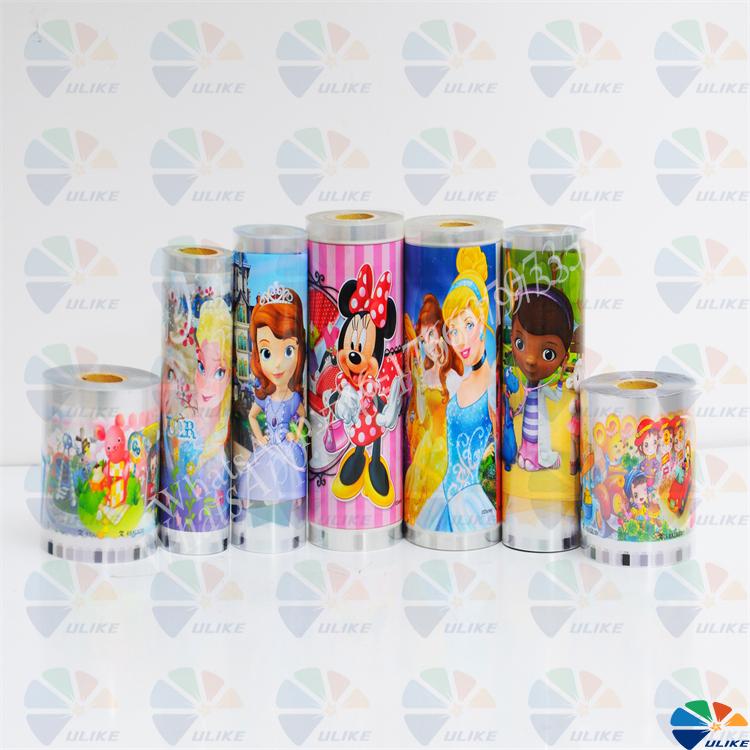Dye History Knowledge of Thermal Transfer Technology
Dye History Knowledge of
Thermal Transfer Technology
In ancient times, or before the invention of synthetic dyes, only natural dyes extracted from plants, animals or minerals could be used for textile printing. Since W. Perkin invented synthetic pigments in 1856, natural dyes have been time-consuming and labor-intensive to use as textile dyes, and they cannot be prefabricated into products that can be used at any time. Therefore, they have gradually lost their important position.
However, Germany began to ban certain azo dyes in 1996, which have been found to be carcinogenic, teratogenic and allergenic. Therefore, people have turned their attention to "environmentally friendly" special inks for thermal transfer machines. The reintroduction of natural environmentally friendly dyes has opened up business opportunities for the textile industry to use these dyes to open up new markets for natural printing and dyeing products. The natural textile product market is a huge market that needs to be fully developed.
To make full use of these natural resources, it is necessary for multiple parties to work together to develop corresponding technologies, processes and products. At present, most research focuses on dyeing with natural dyes and improving the color fastness of dyed products, and rarely involves their application in printing. This study only involves the application of four natural dyes in printing, as well as products used in the preparation of silk and cotton printed fabrics, including clothing, home textiles and handicrafts. This study provides another new way to produce high value-added products.
The thermal transfer inks currently sold on the market are all chemical dyes, and some inks with poor quality and various chemical elements will pose a threat to the human body. Some inks may even cause skin allergies and even respiratory infections. EU countries have begun to legislate on the prohibition of some doping with chemical elements that are harmful to the human body, and exported textiles are subject to strict environmental certification inspections. Plant-specific inks are not only non-toxic and harmless, but also truly green and environmentally friendly products. They also have many medical and health benefits, catering to the modern consumer psychology of returning to nature and strengthening health.
Plant dyes are pure natural plant inks made from Chinese herbal medicines, flowers, tea leaves, fruits and other plants unique to my country, and are refined through many processes such as crushing, soaking, and steaming; they do not contain any chemicals, are non-toxic and harmless, and textiles and clothing printed and dyed with them will not cause any harm to human health. The manufacturing process of pure natural plant dyes has complete independent intellectual property rights. Plant dyes are the best new products for export (especially to the EU, the United States, Japan, etc.) to earn foreign exchange. The plant ink of the thermal transfer machine is pure natural plant and does not contain chemicals. It is the best new product to replace chemical ink for export.

![af]() Afrikaans
Afrikaans![sq]() Albanian
Albanian![am]() Amharic
Amharic![ar]() Arabic
Arabic![fr]() French
French![es]() Spanish
Spanish![ru]() Russian
Russian![de]() German
German![hy]() Armenian
Armenian![it]() Italian
Italian![ja]() Japanese
Japanese![ko]() Korean
Korean![pt]() Portuguese
Portuguese![hi]() Hindi
Hindi![az]() Azerbaijani
Azerbaijani![ro]() Romanian
Romanian![pl]() Polish
Polish![th]() Thai
Thai![el]() Greek
Greek![eu]() Basque
Basque![en]() English
English![zh-CN]() Chinese (Simplified)
Chinese (Simplified)![zh-TW]() Chinese (Traditional)
Chinese (Traditional)![be]() Belarusian
Belarusian![bn]() Bengali
Bengali![bs]() Bosnian
Bosnian![bg]() Bulgarian
Bulgarian![ca]() Catalan
Catalan![ceb]() Cebuano
Cebuano![ny]() Chichewa
Chichewa![co]() Corsican
Corsican![hr]() Croatian
Croatian![cs]() Czech
Czech![da]() Danish
Danish![nl]() Dutch
Dutch![eo]() Esperanto
Esperanto![et]() Estonian
Estonian![tl]() Filipino
Filipino![fi]() Finnish
Finnish![fy]() Frisian
Frisian![gl]() Galician
Galician![ka]() Georgian
Georgian![gu]() Gujarati
Gujarati![ht]() Haitian Creole
Haitian Creole![ha]() Hausa
Hausa![haw]() Hawaiian
Hawaiian![iw]() Hebrew
Hebrew![hmn]() Hmong
Hmong![hu]() Hungarian
Hungarian![is]() Icelandic
Icelandic![ig]() Igbo
Igbo![id]() Indonesian
Indonesian![ga]() Irish
Irish![jw]() Javanese
Javanese![kn]() Kannada
Kannada![kk]() Kazakh
Kazakh![km]() Khmer
Khmer![ku]() Kurdish (Kurmanji)
Kurdish (Kurmanji)![ky]() Kyrgyz
Kyrgyz![lo]() Lao
Lao![la]() Latin
Latin![lv]() Latvian
Latvian![lt]() Lithuanian
Lithuanian![lb]() Luxembourgish
Luxembourgish![mk]() Macedonian
Macedonian![mg]() Malagasy
Malagasy![ms]() Malay
Malay![ml]() Malayalam
Malayalam![mt]() Maltese
Maltese![mi]() Maori
Maori![mr]() Marathi
Marathi![mn]() Mongolian
Mongolian![my]() Myanmar (Burmese)
Myanmar (Burmese)![ne]() Nepali
Nepali![no]() Norwegian
Norwegian![ps]() Pashto
Pashto![fa]() Persian
Persian![pa]() Punjabi
Punjabi![sm]() Samoan
Samoan![gd]() Scottish Gaelic
Scottish Gaelic![sr]() Serbian
Serbian![st]() Sesotho
Sesotho![sn]() Shona
Shona![sd]() Sindhi
Sindhi![si]() Sinhala
Sinhala![sk]() Slovak
Slovak![sl]() Slovenian
Slovenian![so]() Somali
Somali![su]() Sudanese
Sudanese![sw]() Swahili
Swahili![sv]() Swedish
Swedish![tg]() Tajik
Tajik![ta]() Tamil
Tamil![te]() Telugu
Telugu![tr]() Turkish
Turkish![uk]() Ukrainian
Ukrainian![ur]() Urdu
Urdu![uz]() Uzbek
Uzbek![vi]() Vietnamese
Vietnamese![cy]() Welsh
Welsh![xh]() Xhosa
Xhosa![yi]() Yiddish
Yiddish![yo]() Yoruba
Yoruba![zu]() Zulu
Zulu


